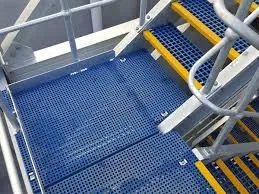
-
 Afrikaans
Afrikaans -
 Albanian
Albanian -
 Amharic
Amharic -
 Arabic
Arabic -
 Armenian
Armenian -
 Azerbaijani
Azerbaijani -
 Basque
Basque -
 Belarusian
Belarusian -
 Bengali
Bengali -
 Bosnian
Bosnian -
 Bulgarian
Bulgarian -
 Catalan
Catalan -
 Cebuano
Cebuano -
 China
China -
 China (Taiwan)
China (Taiwan) -
 Corsican
Corsican -
 Croatian
Croatian -
 Czech
Czech -
 Danish
Danish -
 Dutch
Dutch -
 English
English -
 Esperanto
Esperanto -
 Estonian
Estonian -
 Finnish
Finnish -
 French
French -
 Frisian
Frisian -
 Galician
Galician -
 Georgian
Georgian -
 German
German -
 Greek
Greek -
 Gujarati
Gujarati -
 Haitian Creole
Haitian Creole -
 hausa
hausa -
 hawaiian
hawaiian -
 Hebrew
Hebrew -
 Hindi
Hindi -
 Miao
Miao -
 Hungarian
Hungarian -
 Icelandic
Icelandic -
 igbo
igbo -
 Indonesian
Indonesian -
 irish
irish -
 Italian
Italian -
 Japanese
Japanese -
 Javanese
Javanese -
 Kannada
Kannada -
 kazakh
kazakh -
 Khmer
Khmer -
 Rwandese
Rwandese -
 Korean
Korean -
 Kurdish
Kurdish -
 Kyrgyz
Kyrgyz -
 Lao
Lao -
 Latin
Latin -
 Latvian
Latvian -
 Lithuanian
Lithuanian -
 Luxembourgish
Luxembourgish -
 Macedonian
Macedonian -
 Malgashi
Malgashi -
 Malay
Malay -
 Malayalam
Malayalam -
 Maltese
Maltese -
 Maori
Maori -
 Marathi
Marathi -
 Mongolian
Mongolian -
 Myanmar
Myanmar -
 Nepali
Nepali -
 Norwegian
Norwegian -
 Norwegian
Norwegian -
 Occitan
Occitan -
 Pashto
Pashto -
 Persian
Persian -
 Polish
Polish -
 Portuguese
Portuguese -
 Punjabi
Punjabi -
 Romanian
Romanian -
 Russian
Russian -
 Samoan
Samoan -
 Scottish Gaelic
Scottish Gaelic -
 Serbian
Serbian -
 Sesotho
Sesotho -
 Shona
Shona -
 Sindhi
Sindhi -
 Sinhala
Sinhala -
 Slovak
Slovak -
 Slovenian
Slovenian -
 Somali
Somali -
 Spanish
Spanish -
 Sundanese
Sundanese -
 Swahili
Swahili -
 Swedish
Swedish -
 Tagalog
Tagalog -
 Tajik
Tajik -
 Tamil
Tamil -
 Tatar
Tatar -
 Telugu
Telugu -
 Thai
Thai -
 Turkish
Turkish -
 Turkmen
Turkmen -
 Ukrainian
Ukrainian -
 Urdu
Urdu -
 Uighur
Uighur -
 Uzbek
Uzbek -
 Vietnamese
Vietnamese -
 Welsh
Welsh -
 Bantu
Bantu -
 Yiddish
Yiddish -
 Yoruba
Yoruba -
 Zulu
Zulu
frp pipes and fittings
The Benefits of FRP Pipes and Fittings
Fiber Reinforced Plastic (FRP) pipes and fittings have gained widespread popularity in various industries due to their unique properties and advantages over traditional materials. These composite materials, made from a polymer matrix reinforced with fibers, typically glass, carbon, or aramid, present a range of benefits that make them ideal for numerous applications.
One of the primary advantages of FRP pipes and fittings is their resistance to corrosion. Unlike metal pipes that can erode or rust over time, FRP materials are inherently resistant to a range of chemicals and environmental conditions. This characteristic makes them an excellent choice for industries such as water treatment, wastewater management, and chemical processing, where corrosive substances are prevalent.
The Benefits of FRP Pipes and Fittings
Moreover, FRP pipes and fittings offer superior strength and durability. The composite structure provides high tensile strength, allowing these materials to withstand high pressures and mechanical stress. This durability results in a longer lifespan compared to conventional piping systems, ultimately leading to lower maintenance costs and reduced need for frequent replacements.
frp pipes and fittings

The flexibility of FRP is another noteworthy characteristic. Unlike rigid materials, FRP can be manufactured to various shapes and sizes, including custom fittings that accommodate unique installation requirements. This flexibility facilitates easier integration into existing systems and can lead to more efficient piping layouts.
In addition to practical advantages, FRP products are also environmentally friendly. The manufacturing process can be designed to minimize waste, and the materials themselves can be produced from recycled content. Furthermore, FRP systems help in conserving resources by reducing leakage and contributing to lower energy consumption in various applications.
From a cost perspective, although the initial investment in FRP pipes and fittings may be higher than traditional solutions, their long-term benefits outweigh these upfront costs. Their durability, reduced maintenance requirements, and efficiency savings can lead to significant cost reductions over the lifespan of the project.
In conclusion, FRP pipes and fittings represent a significant advancement in piping technology. Their corrosion resistance, lightweight nature, strength, flexibility, and environmental benefits make them an optimal choice for a variety of applications. As industries continue to seek innovative solutions to meet the challenges of modern engineering, FRP materials are poised to play a pivotal role in the development of sustainable and efficient piping systems.









